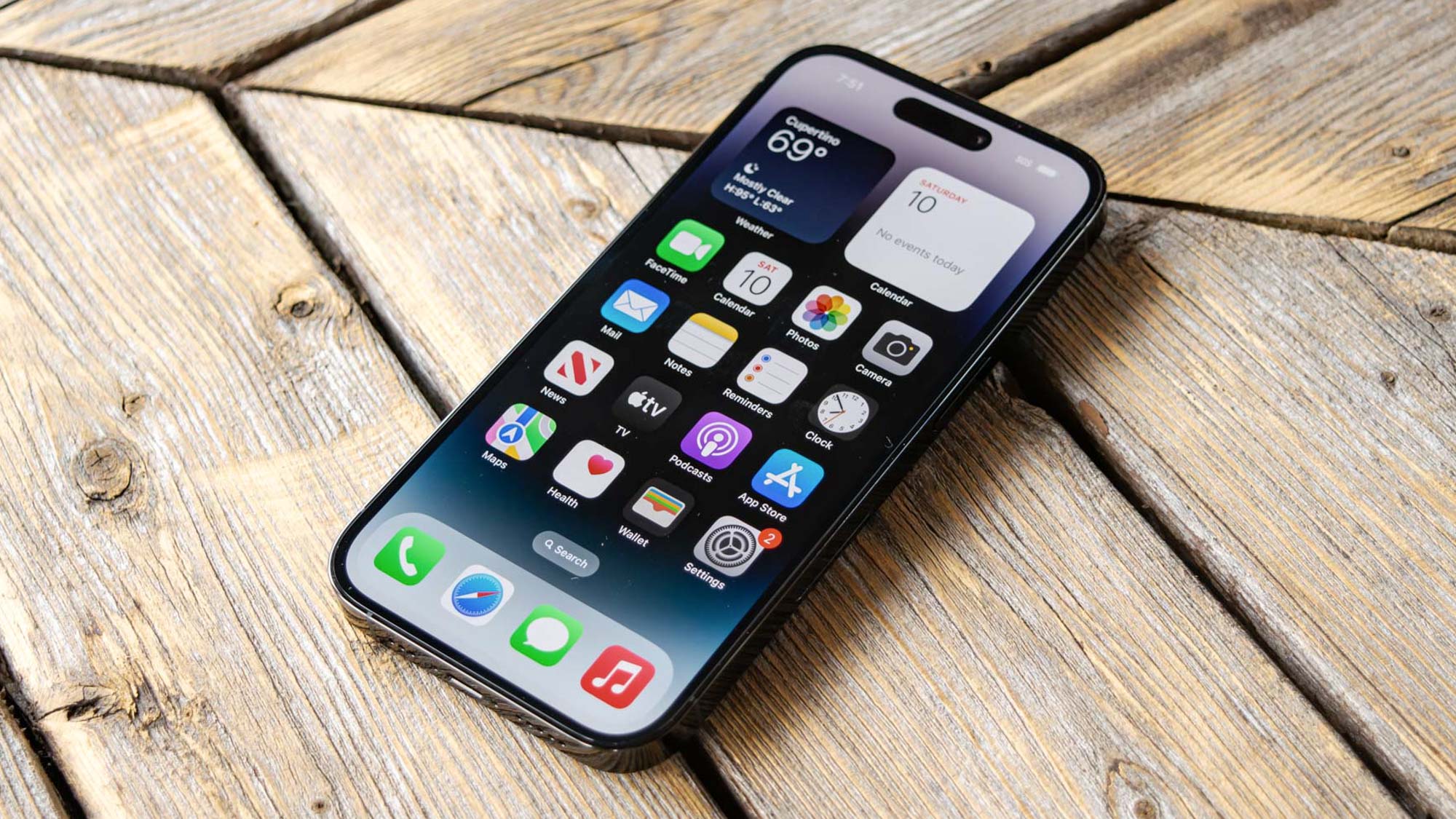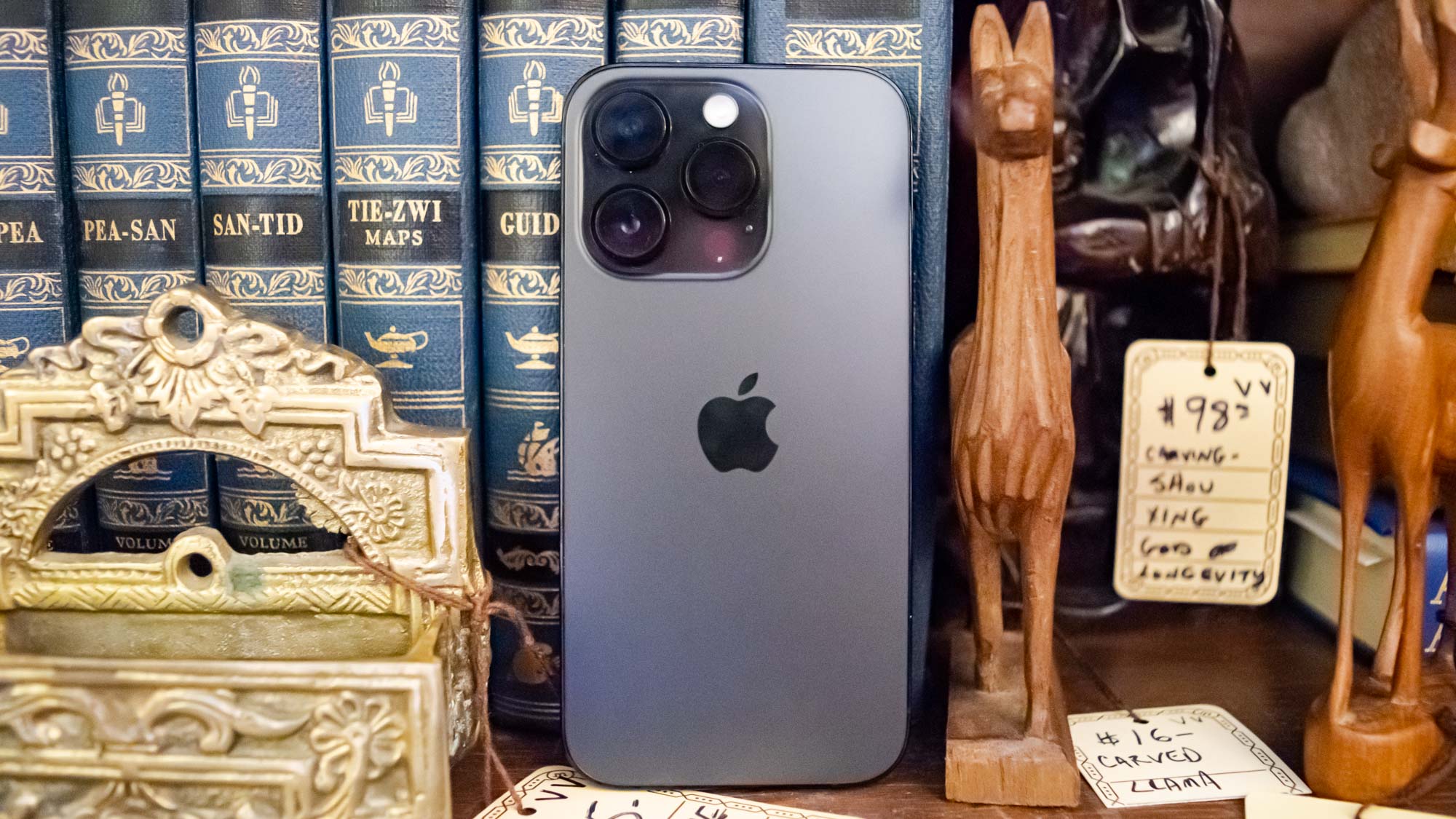iPhone 14 Pro benchmarks — here’s how powerful A16 Bionic is
Apple has once again leapt ahead of the competition

Our iPhone 14 reviews are out, with both Mark Spoonauer and I coming away impressed with the iPhone 14 Pro Max, iPhone 14 Pro, and iPhone 14. In the case of the Pro models in particular, we need to single out the new A16 Bionic chipset that powers Apple's higher-end phones.
You read that right. The iPhone 14 (and iPhone 14 Plus) do not get the A16, instead sticking with the A15 Bionic from last year — albeit the more powerful version from the iPhone 13 Pro. That's not necessarily all bad, though, since the iPhone 14 is still ahead of even the best Android phones, as you'll see in a moment. But it's a good reason why the iPhone 14 Pro is miles ahead of the iPhone 14.
As part of our smartphone review process, we run every phone through a suite of benchmarks to test CPU and GPU performance. Test include Geekbench 5, Geekbench ML, 3DMark Wild Life and a 4K-1080p transcode test in Adobe Premiere Rush. We also test displays and battery life, but those are a different story.
I gathered test results from a bunch of different phones here to show off how the Snapdragon 8 Gen 1, Snapdragon 8 Plus Gen 1 and Google Tensor compare to Apple's chipset. Spoiler alert, it's not even close in some cases.
iPhone 14 and 14 Pro benchmarks: Geekbench results
Geekbench measures CPU efficiency, both in single-core and multicore applications. Geekbench ML measures the neural processing unit's capabilities with machine learning.
| Row 0 - Cell 0 | CPU | Single-core | Multicore | TensorFlow Lite NPU |
| iPhone 14 Pro Max | A16 Bionic | 1882 | 5333 | 3165 |
| iPhone 14 Pro | A16 Bionic | 1891 | 5469 | 3173 |
| iPhone 14 | A15 Bionic | 1727 | 4553 | 2777 |
| iPhone 13 Pro | A15 Bionic | 1733 | 4718 | 2700 |
| Galaxy S22 Ultra | Snapdragon 8 Gen 1 | 1240 | 3392 | 3132 |
| Galaxy Z Fold 4 | Snapdragon 8 Plus Gen 1 | 1328 | 3831 | 3165 |
| Pixel 6 Pro | Tensor | 1027 | 2760 | 1745 |
| ROG Phone 6 Pro | Snapdragon 8 Plus Gen 1 | 1316 | 4197 | 3303 |
| OnePlus 10 Pro | Snapdragon 8 Gen 1 | 995 | 3482 | 2108 |
Always take Geekbench scores with the caveat that they don't really mean much. By that, I mean the score is not a measurable metric that's easy to understand, unlike say frames per second. You can only measure Geekbench scores in comparison to one another.
That said the A16 Bionic crushes anything else trying to beat it. The Snapdragon 8 Plus Gen 1 is currently the best system-on-chip Qualcomm has to offer, with the Asus ROG Phone 6 Pro being the most powerful phone with that chip we've tested. And yet the A16-powered phones enjoy a substantial lead over the top Snapdragon silicon. There's more than a thousand-point difference between the iPhone 14 Pro and the ROG Phone 6 Pro.
Sign up to get the BEST of Tom's Guide direct to your inbox.
Get instant access to breaking news, the hottest reviews, great deals and helpful tips.

Considering how much I love the Pixel 6 Pro, I hate to say this, but Google's Tensor chip is sorely lacking in all areas compared to Apple. Not only are single-core and multicore performance leagues behind, but Tensor's machine learning power pales in comparison to the A16 Bionic's. It's kind of sad.
When it comes to raw CPU power, the iPhone 14 Pro and its A16 Bionic destroy everything else. Even the A15 Bionic-powered iPhone 14 leads the rest of the pack. Qualcomm needs to figure out how to catch up.
One interesting A15 result, though. The chip powering the iPhone 14 may be the same one found in last year's iPhone 13 Pro models, but the iPhone 13 Pro Max posted slightly better numbers on the main Geekbench test — not enough to make much of a difference in real-world performance, but you'd expect the numbers to be more similar.
iPhone 14 benchmarks: 3DMark Wild Life
3DMark makes graphics benchmarks, and we use Wild Life to test the graphic performance of mobile devices. I typically choose to look at two of the settings, Unlimited and Extreme Unlimited. These push the GPU as hard as it can go, especially the Extreme Unlimited test. It's a good test to see a phone's gaming performance, and I look at the average frames per second (FPS) count to make my distinctions.
| Row 0 - Cell 0 | Unlimited (FPS) | Extreme Unlimited (FPS) |
| iPhone 14 Pro Max | 74 | 20 |
| iPhone 14 Pro | 74 | 19 |
| iPhone 14 | 69 | 18 |
| iPhone 13 Pro | 70 | 19 |
| Galaxy S22 Ultra | 57 | 14 |
| Galaxy Z Fold 4 | 53 | 16 |
| Pixel 6 Pro | 40 | 11 |
| ROG Phone 6 Pro | 66 | 17 |
| OnePlus 10 Pro | 61 | 16 |
This race between Apple and Qualcomm is much closer in graphics than the CPU test. Google is quite a ways behind, as you might expect— a powerful gaming phone the Pixel 6 Pro is not. The device to pay attention to is the ROG Phone 6 Pro, the best Android gaming phone around.

Samsung's Galaxy S22 Ultra trails the iPhone 14 Pro in this benchmark substantially by almost 20 fps. The Galaxy S22 Ultra is technically below 60 fps — what many consider to be the gold standard for gaming.
The A16 Bionic's 5-core GPU is a powerhouse, delivering more than 70 fps in the Wild Life Unlimited test. Even in the Extreme Unlimited, it outperformed everything else.
Phones with the Snapdragon 8 Plus Gen 1 do better, which makes sense since Qualcomm upped the GPU power quite noticeably. The outlier is the Galaxy Z Fold 4 and my suspicion is that because the foldable's cooling system isn't ideal, the system-on-chip thermal throttles to cool down.
iPhone 14 benchmarks: Adobe Premiere Rush
We wrap up these benchmarks with our Adobe Premiere Rush test, where we task a phone to transcode a 4K video file to 1080p as quickly as possible. The iPhone 14 Pro didn't show marked improvement over the iPhone 13 Pro. In fact, they posted the same time at 26 seconds. Don't get me wrong, that's a crazy good time, but I find it odd how there's no improvement year-over-year in this test. Even more curiously, the iPhone 14 Pro Max was 4 seconds slower, trailing even the A15-powered iPhone 14.
| Row 0 - Cell 0 | Time to complete (Mins:Secs) |
| iPhone 14 Pro Max | 0:30 |
| iPhone 14 Pro | 0:26 |
| iPhone 14 | 0:28 |
| iPhone 13 Pro | 0:26 |
| Galaxy S22 Ultra | 0:47 |
| Galaxy Z Fold 4 | 0:45 |
| Pixel 6 Pro | 0:48 |
| ROG Phone 6 Pro | N/A |
| OnePlus 10 Pro | 1:02 |
Still, all those iPhone times are way faster than the best Android has to offer. Unfortunately, the test kept crashing on the ROG Phone 6 Pro, so we don't have numbers from the most powerful Android phone around. However, the Galaxy Z Fold 4 sat at 45 seconds, almost twice as long as the iPhone 14 Pro and iPhone 13 Pro.
The outlier is the OnePlus 10 Pro at a whopping 1 minute, 2 seconds. Even the Pixel 6 Pro managed to complete the task 48 seconds, so something was up with the OnePlus 10 Pro.
iPhone 14 benchmarks: Outlook

Apple has once again solidified its lead in the mobile system-on-chip space, beating out the best that Android has to offer by quite a margin in some cases. But it's important to remember that you don't see most of that horsepower a lot of the time. For the vast majority of people, the A16 Bionic's capabilities will appear mostly in games.
Otherwise, the A16 Bionic stops at nothing. It's an impressive chip that is also very power-efficient. You have to wonder if the Snapdragon 8 Gen 2 will come close to what Apple has done, but Qualcomm still needs to catch up to the A15 Bionic, too.
So the iPhone 14 Pro and iPhone 14 Pro Max are, without a doubt, the fastest and most powerful phones ever. Combine them with their other benefits and you have yourself the best phones ever made.

Jordan is the Phones Editor for Tom's Guide, covering all things phone-related. He's written about phones for over six years and plans to continue for a long while to come. He loves nothing more than relaxing in his home with a book, game, or his latest personal writing project. Jordan likes finding new things to dive into, from books and games to new mechanical keyboard switches and fun keycap sets. Outside of work, you can find him poring over open-source software and his studies.
-
techconc “Apple has once again leapt ahead of the competition“Reply
Leaping ahead of the competition implies the competition has been ahead of Apple. That hasn’t been the case for many years now. Realistically, the Android world is struggling to leap ahead of the A13 much less the A14, A15 or A16.
